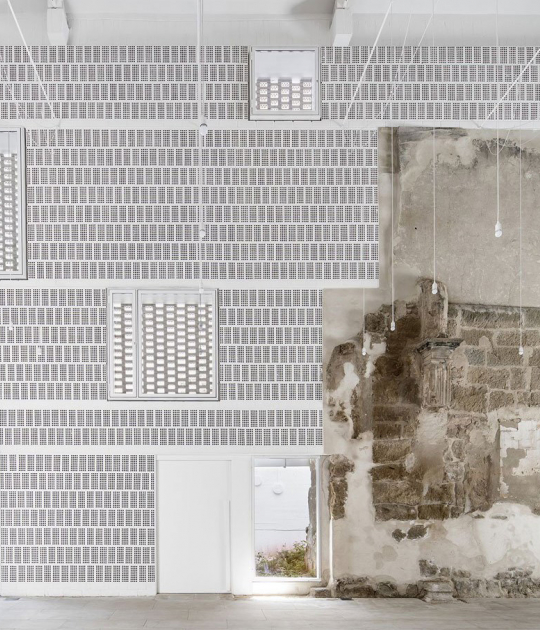The Portal of Glory of the Santiago de Compostela Cathedral, created between 1168 and 1188 by Master Mateo on behalf of King Ferdinand II of León, is considered the pinnacle of Romanesque sculpture in Spain. For the millions of pilgrims who have made the Camino de Santiago over the centuries, the Portal of Glory is the goal of a long journey.
The size and quality of the sculpture group as well as its symbolic and religious significance make it one of the most appreciated monuments in Europe.
The size and quality of the sculpture group as well as its symbolic and religious significance make it one of the most appreciated monuments in Europe.
"This monument is one of the most visited places of pilgrimage in Europe and is representative of its heritage", said the jury.
The Portal suffered a high degree of deterioration due to the effects of environmental conditions, inappropriate conservation techniques and certain ingrained customs and traditions. In the mid-2000s, the critical situation in which the work was found required urgent intervention.
The project of preventive conservation and restoration of the Portal of Glory has been jointly led by the Barrié Foundation and the Cathedral Foundation, with the technical coordination of the Institute of Cultural Heritage of Spain (IPCE) and the supervision of the Xunta de Galicia. The project has made possible thanks to the exclusive patronage of the Barrié Foundation.
The integral project was carried out in a period of 12 years. During its first phase, teams of internationally recognized experts developed various lines of research, ranging from polychrome analysis and biodeterioration, to monitoring of environmental conditions and the experimentation with chemical or laser treatments. The exhaustive investigation allowed to deepen the knowledge of the Portal and its state of conservation and served as the basis for drafting the Preventive Conservation Plan and the intervention proposal.
The restoration efforts focused on taking the necessary measures to neutralize the deterioration processes related to degradation factors and to preserve all the preserved color remains. The intervention has followed a conservative approach, removing only the accumulated harmful deposits on the surface and affecting the stability of historical materials, as is the case of dirt, salts, remains of biological nature, acrylic consolidating products and Cement mortars added in previous interventions not very compatible with the original surface.
The project has allowed to preserve the polychrome that still remained from an imminent risk of permanent loss, respecting the aesthetic harmony and the long history of the monument, so that it can be admired by future generations.
The jury praised this project as a "very outstanding example of conservation and careful recovery of polychrome stone sculpture in a work of fundamental importance in Romanesque sculpture".




























